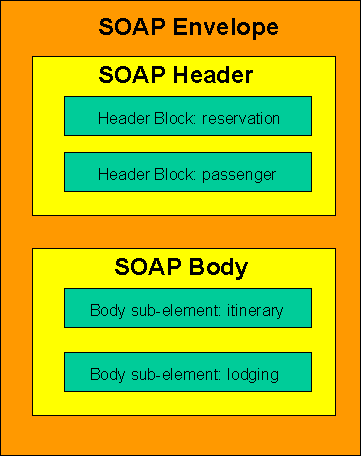A. Acknowledgements (Non-Normative)
Highland Mary Mountain (Intel)
Martin Gudgin reviewed the additional material in the second edition and
provided many helpful comments.
This document is the work of the W3C XML Protocol Working Group.
Participants in the Working Group are (at the time of writing, and by
alphabetical order):CarineBournez(W3C),MichaelChampion(SoftwareAG),(Macromedia,Allaire),DavidFallsideChair),DietmarGaertner(SoftwareAG),TonyGraham(SunMicrosystems),MartinGudgin(MicrosoftCorporation,DevelopMentor),GerdHoelzing(SAPAG),OisinHurley(IONATechnologies),JohnIbbotson(IBM),RyujiInoue(MatsushitaElectric),KazunoriIwasa(FujitsuLimited),MarioJeckle(DaimlerChryslerR.&Tech),MarkJones(AT&T),JacekKopecky(Systinet/Idoox),MichahLerner(AT&T),NoahMendelsohn(IBM,formerlyofLotusDevelopment),NiloMitra(Ericsson),Jean-JacquesMoreau(Canon),MasahikoNarita(FujitsuLimited),MarkNottingham(BEASystems,formerlyofAkamaiTechnologies),AndreasRiegg(DaimlerChryslerR.&Tech),HervéRuellan(Canon),JeffSchlimmer(MicrosoftCorporation),MiroslavSimek(Systinet/Idoox),(SeeBeyond),VolkerWiechers(SAPAG).
Previous participants were: Yasser alSafadi (Philips Research),
Bill Anderson (Xerox),
Vidur Apparao (Netscape),
Camilo Arbelaez (WebMethods),Mobile(Planetfred),(Electricitéde(Electricitéde(Novell),ConlethO'Connell(Vignette),(eXcelon),Dug(MITRE),(Tibco),(Hewlett-Packard),ChrisFerris(SunMicrosystems),Hoffman(Tradia),SoftwareCorporation),(Hewlett-Packard,(Novell),AmyLewis(TIBCO),(Intalio),HighlandMaryMountain(Intel),(TIBCO),(Cisco),(Novell),(MITRE),(Zolera),(Cisco),(Tradia),SimeonSimeonov(Allaire),(WebMethods),(Hewlett-Packard),(Martsoft).
We also wish to thank all the people who have contributed to discussions
on xml-dist-app@w3.org.
